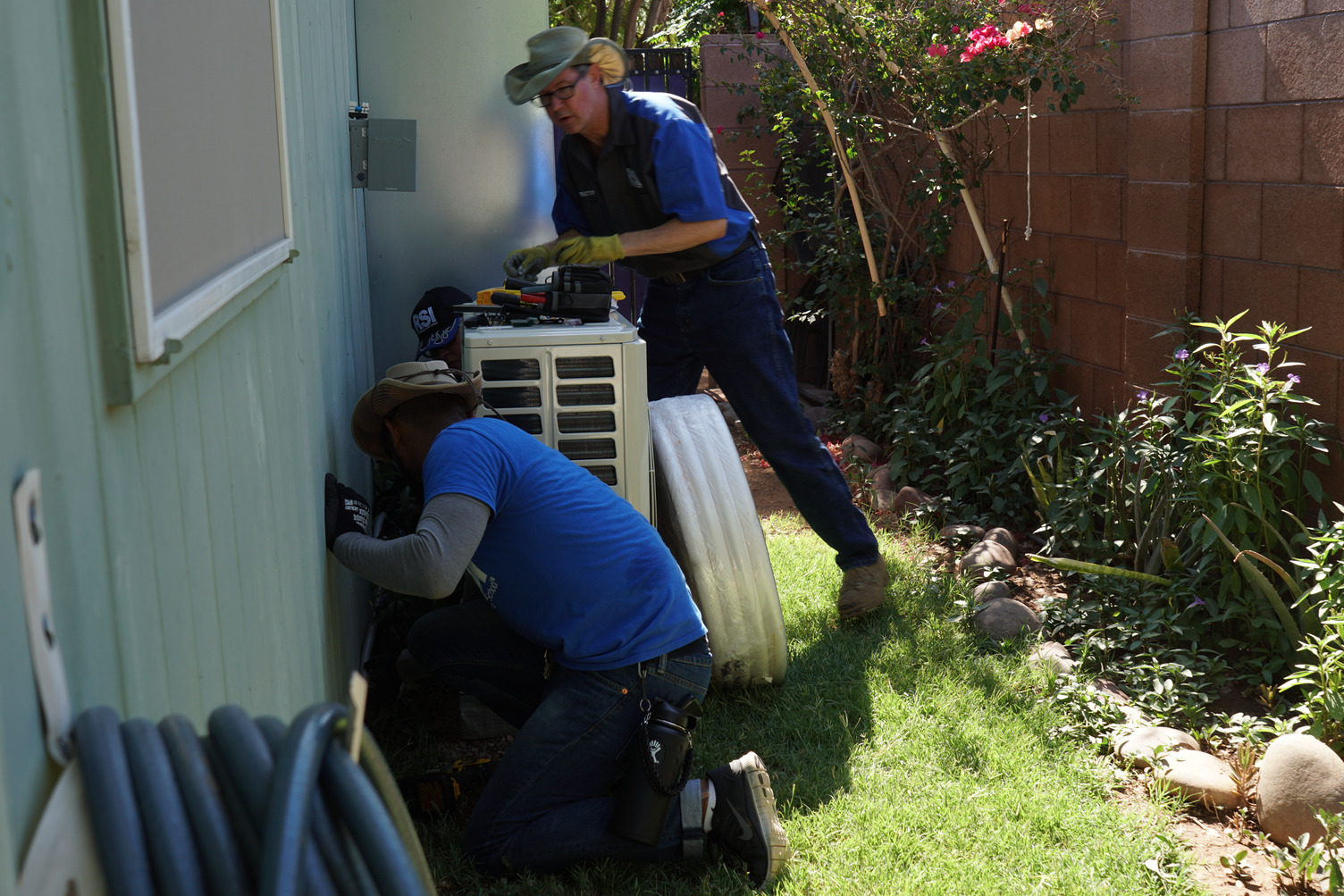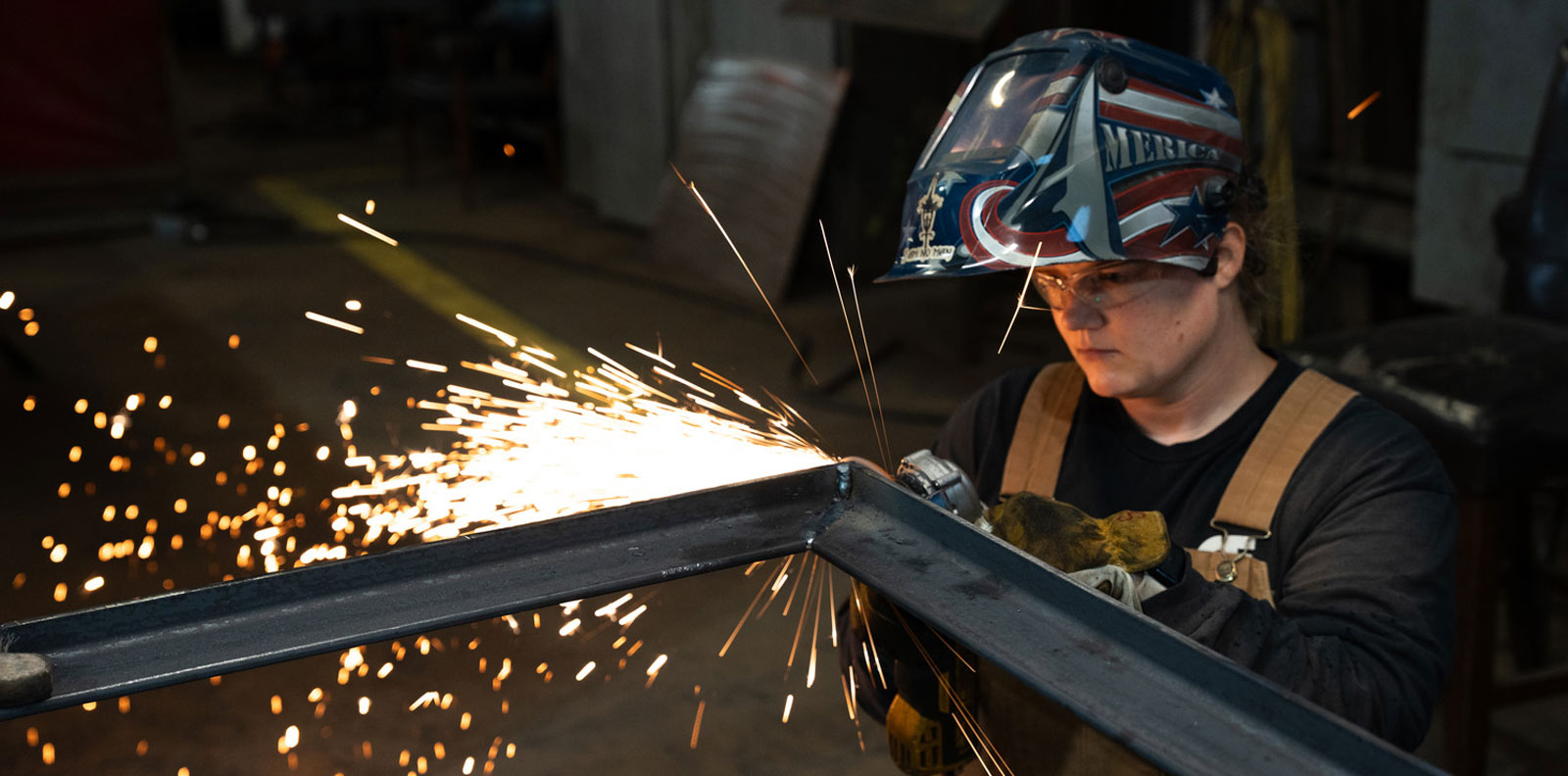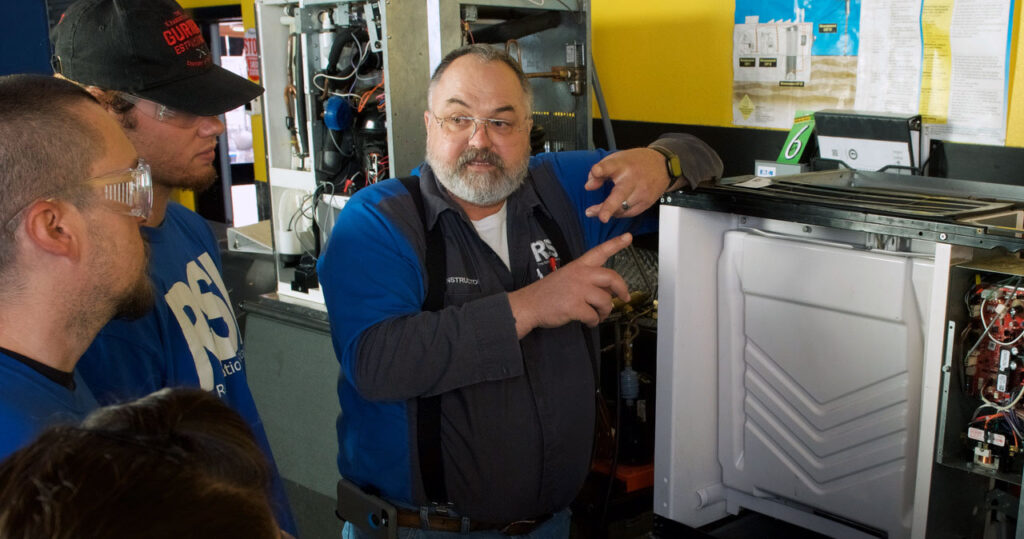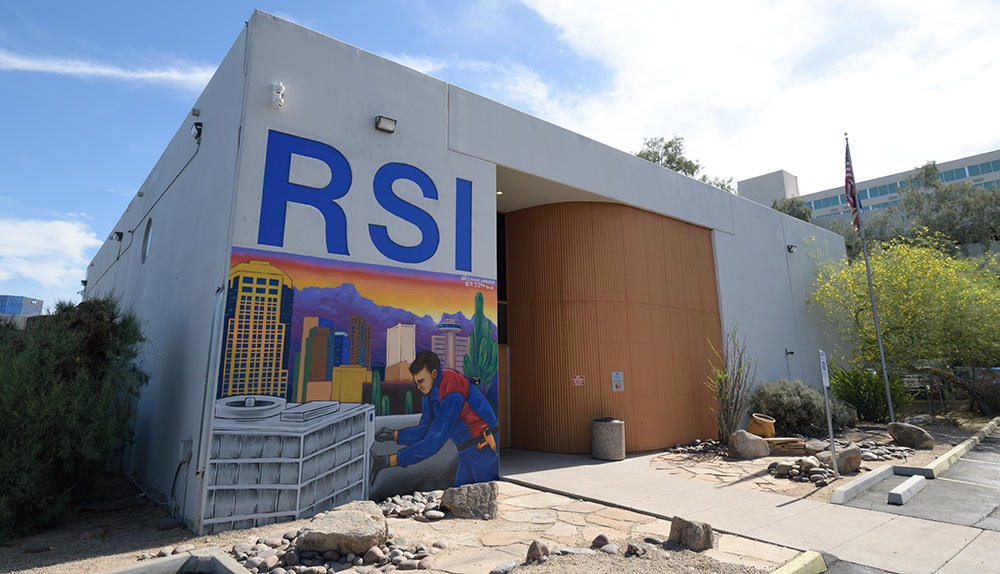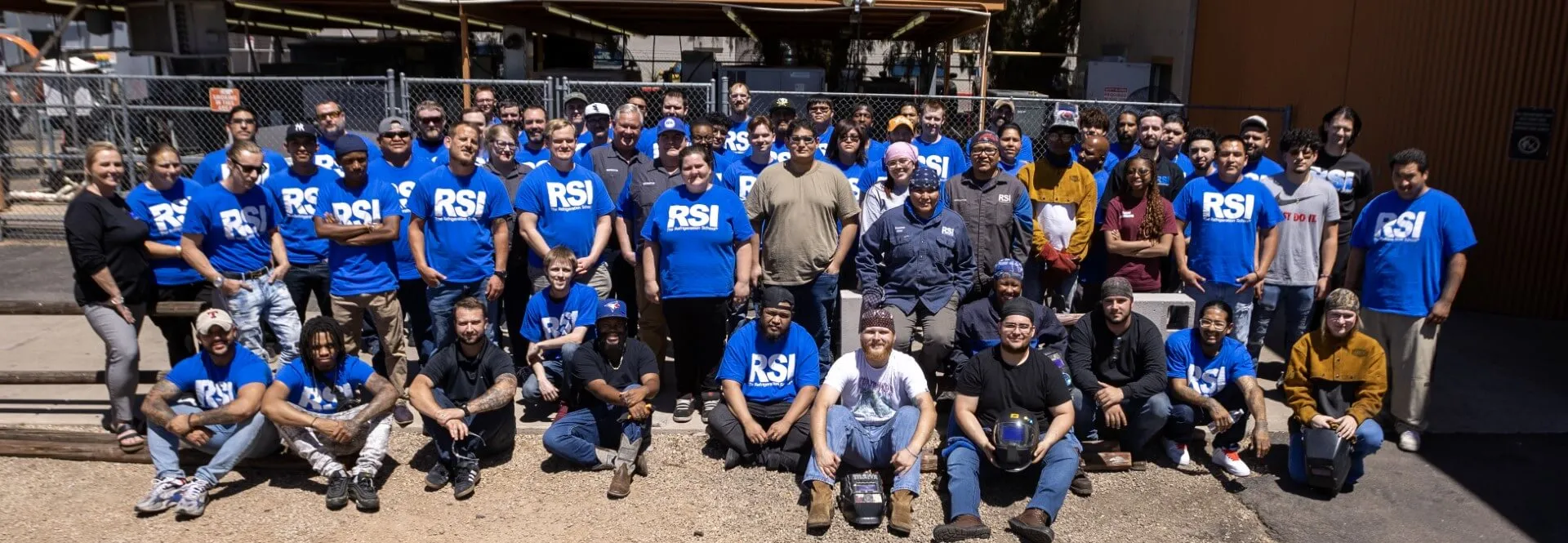RSI is a Great Training Option for Everyone
Learn more about how we can prepare you to advance your career.
Arizona’s climate creates tough conditions for HVAC systems. Long, blazing summers and dry air put extra strain on equipment, wearing parts down faster than usual. Compounding the problem, dust is everywhere—it clogs filters, blocks airflow, and makes systems less efficient. For HVAC technicians, understanding how this climate impacts performance is the first step to keeping systems running smoothly.
Some of the most common challenges in Arizona include systems working overtime in extreme heat, dust building up inside units, and parts wearing out more quickly from constant use. Knowing these issues upfront helps technicians take proactive steps that keep equipment reliable and clients comfortable.
Tools for HVAC Troubleshooting in Extreme Heat
In Arizona’s heat, HVAC technicians rely on some core tools to get the job done right. Multimeters measure voltage, current, and resistance so electrical issues don’t go unnoticed. Refrigerant gauges check pressure levels to confirm systems are running within safe limits. Thermal imaging cameras highlight hot spots that reveal hidden inefficiencies or parts that are close to failing.
Keeping tools in good condition is just as important as using them. Regular checks and proper care prevent breakdowns when they’re needed most. With well-maintained equipment and the skills to use it, technicians can diagnose problems faster, make repairs more effective, and deliver reliable service to their clients.
Common HVAC Issues Faced in Desert Climates
Desert heat puts HVAC systems under constant strain, and certain problems show up more often than others.
Get Started on the Path to a New Career
Fill out our form to learn how we can help you change your life.
One of the biggest issues is overheating compressors. When systems run nonstop in extreme temperatures, compressors can fail, leading to expensive repairs and longer downtime.
Clogged filters are another common problem. Dust and debris build up quickly in desert environments, restricting airflow, lowering efficiency, and driving up energy bills for homeowners.
Malfunctioning thermostats can also cause trouble. Even if the rest of the system is working, a faulty thermostat can leave indoor spaces uncomfortable and make it harder to maintain steady temperatures.
For HVAC technicians, being aware of how the components are affected helps diagnose problems and put effective solutions in place, minimizing downtime for clients.
Why Maintenance and Inspections Matter
Regular maintenance is non-negotiable for HVAC systems in Arizona’s extreme heat. Frequent inspections let technicians catch problems early, before they turn into major repairs. Key areas to focus on include:
- Cleaning or replacing filters: Clear filters improve airflow, boost efficiency, and reduce strain on the system.
- Checking refrigerant levels: Correct refrigerant levels keep the system from overworking and help prevent breakdowns.
- Inspecting electrical components: Making sure wiring and connections are in good shape reduces the chance of unexpected failures.
Taking a proactive approach extends the life of HVAC equipment and improves energy efficiency. Clients notice the difference too as well-maintained systems only run better and save money on energy bills, making regular professional service a smart investment.
HVAC Troubleshooting: Real-Life Examples
Real-world troubleshooting often teaches lessons that no classroom can. One technician, for example, was called to a home during a brutal heatwave where the air conditioner simply couldn’t keep up. After running a full inspection, they discovered the condenser coil was clogged with dust and debris. A thorough cleaning solved the problem, and the system was back to cooling efficiently.
Stories like this show why careful diagnostics and quick thinking matter. By learning from real situations, technicians sharpen their skills and gain the confidence to handle unexpected challenges. This kind of continuous learning leads to better service and more satisfied clients.
Necessary HVAC Skills for Desert Climates
Working in Arizona’s desert climate requires more than basic HVAC knowledge. Technicians need to be comfortable with modern systems, including geothermal and solar-powered technology, which are becoming more common in the state.
Arizona HVAC techs also need sharp problem-solving skills and the ability to adapt quickly in extreme conditions. Knowing when a system is close to its limit and making timely adjustments can prevent breakdowns and keep clients comfortable.
During heatwaves, air conditioning can literally be life-saving, especially for vulnerable populations like children and seniors. That’s why it’s so important for technicians to be prepared for the challenges that come with working in such harsh conditions.
Specialized training helps technicians refine these skills and stay competitive in Arizona’s fast-growing HVAC market. The more prepared they are for desert conditions and maintaining new tech, the more opportunities they’ll have to advance in their careers.
Preparing HVAC Systems for Extreme Heat
Getting HVAC systems ready for Arizona’s extreme heat means taking proactive steps to improve both efficiency and durability:
- Proper insulation: Insulation is the first line of defense against high temperatures. It keeps cool air inside and reduces the load on the system.
- Sealed ductwork: Leaky ducts waste cooled air and make the system work harder. Sealing them tight improves airflow and overall efficiency.
- Programmable thermostats: These devices help manage cooling cycles during peak heat, easing strain on the system and cutting energy costs.
By staying on top of these best practices, technicians can prepare systems to handle Arizona’s toughest months. Proper preparation prevents costly breakdowns, saves clients money, and ensures reliable comfort when it’s needed most.
Frequently Asked Questions
What training do I need to become an HVAC technician in Arizona?
To start an Arizona HVAC career, you’ll need to complete a training program that balances theory with real-world experience. Look for training that covers HVAC systems, electrical basics, and refrigeration. Schools like The Refrigeration School, Inc. (RSI) offer programs designed for Arizona’s industry needs.
How long does HVAC training take at The Refrigeration School?
At RSI in Phoenix, AZ, HVAC training programs vary in length, but some can be finished in as little as seven months. This gives students time to build both the technical knowledge and practical skills needed to launch a career.
What career opportunities exist for HVAC technicians in Arizona?
HVAC technicians in Arizona can work in many areas, ranging from installing and maintaining residential and commercial systems to repair work. As demand grows, opportunities are opening up in specialties like energy efficiency and renewable technologies.
How can I ensure my HVAC system runs efficiently during extreme heat?
Homeowners can make a big difference by changing filters regularly, scheduling inspections, and making sure their homes are insulated. Adding a programmable thermostat also helps manage cooling needs during peak heat, lowering strain on the system and reducing energy bills.
Train for Your HVAC Career
Arizona’s climate demands skilled HVAC technicians who understand how to keep systems running when it matters most. If you’re ready to take on that challenge and build a career where your work makes a real difference, RSI’s HVAC/R training programs in Phoenix can help you get started. With hands-on instruction and a curriculum designed for the realities of the Southwest, you’ll be prepared to step into the field with confidence. Contact our admissions team today to learn how you can begin training in as little as seven months.
